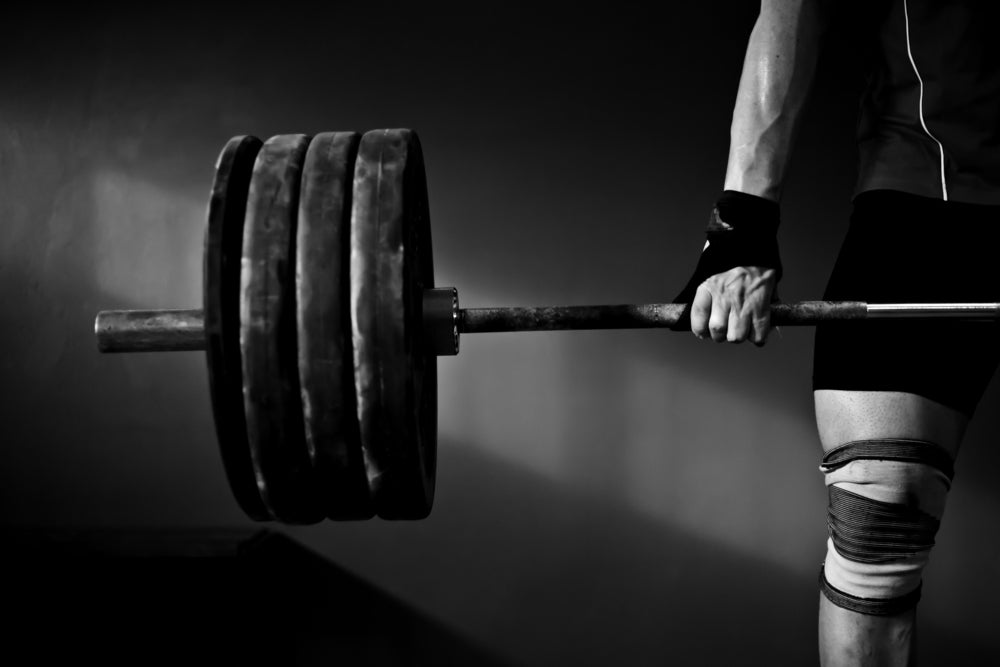THROWBACK THURSDAY! THERE IS NOTHING NEW UNDER THE SUN PHYSICAL CULTURE FADDISM PART 1
Having been involved in physical culture, weightlifting, powerlifting, group fitness, and all things resembling any of the for over two decades, I’ve been highly amused to see what training methods, exercises, and nomenclature come in and out of vogue. When I first started training, body part regimens were all the rage, and that’s basically all we did for years. Certain exercises faded in and out of popularity at that time, driven mostly by the degree to which the bodybuilding magazines pushed them.
There was the movement to abandon barbells “because they cause muscular imbalances” and adopt dumbbell-only programs, the introduction of super slow training, the mystifying obsession with bosu and Swiss balls that accompanied the loathsome “core training” nonsense, and finally the gradual decline into total idiocy we are seeing today wherein everyone has decided to stop thinking for themselves and do cookie cutter programs to avoid “wasting their time” in the gym.
Given my recent penchant for harping upon the most modern of these trends, I thought exercise faddism throughout the ages might bear some investigation, so we can all see that everything that’s going to be tried has literally already been tried, so to see what’s coming we need to look behind us. Avoiding the aphorisms of George Santayana would likely benefit us all, so we’ll just go with the idea that only the mentally challenged and the deliberately ignorant ignore the lessons of the past.
Physical culture says - I’m afraid “Jesus told me to kill that chick” is not a sound legal argument.
Given that exercise faddism has an history longer than Tori Spelling’s face, this series is going to get split into exercises/implements and training programs. Mashing the two together would likely just make this entire enterprise a bigger mess than Tim Lambesis’s legal defense. To preface the treatment on exercises, it’s of note for all the anti-bicep curl wunderkind out there that the bicep curl only fell out of favor when male testosterone levels decided to drop more precipitously than a 20 something’s frequency of erections after switching to a vegan diet. That’s right- curls for the girls has been a thing if there have been things to curl to catch chicks’ attention. This, I suppose, accounts for the rise of the anti-fap movement in concert with the anti-curling movement. If you’re never going to get in the game anyway, what’s the point of practicing?
The Minoans liked their women with huge forearms and huger boobs and jumped over stampeding bulls in their free time. Brb- building time machine to go to ancient Crete.
Unfortunately, we don’t know a hell of a lot about the anomalous ancient culture (like those of Turkey that predate the Neolithic). Frankly, we don’t know much other than they were likely massively strong because they constructed cyclopean stone structures, we’d have trouble recreating today. Though we know more about the civilizations, we’re in the same Vin Diesel style Pitch Black dark about strength training with the Mesopotamians, Chinese, and Egyptians, all of whom were holding regular athletic competitions as far back as 3,000 BC. The Egyptians, insofar as we know, tested their strength with stone lifting, but that’s as far as our knowledge goes. Likewise, we’re in the dark about the Minoans and Mycenaeans, both of whom appear to have been jacked from their art, but about whom we know little more than what we can glean from their artifacts.
Not surprisingly, this picture was accompanied by a statement on Reddit to the effect that halteres were not used as dumbbells.
The Dumbbell Is Handed Down from Olympus- Behold the Halteres
The earliest instance of systematic weight training we can find, then, comes from the Greeks. As can be seen from any Grecian art, the Greeks placed more value on physical culture perfection than do the guidos down the Jersey Shore, so it would stand to reason that they’d have a system for obtaining those beach ready bodies. Their tool in the war on weakness were the halteres, the earliest version of the modern dumbbell, which was developed by the Greeks for use in the broad jump (athletes were able to extend the distance of their jump significantly by swinging the halteres and allowing the lead weights to carry them forward).
By the 5th Century BC, the halteres seem to have become weight training implements, as depictions of their use included something akin to a lateral raise. By the second century AD, an entire system of weight training with the halteres had been developed, with the physician Galen outlining their use in strengthening the body. This style of weight training, known as “halter throwing” consisted of three main movements:
- Bicep curl. Nothing surprising there. Curls for the girls was a thing long before Jersey Shore and tanning beds.
- Walking lunges. The Greeks had an interesting take on these. They focused heavily on fighting, so strong shoulders were even more important than strong legs. As such, they held halteres at arms length in front of them as they did the lunges, not unlike the arm position for pistols.
- Suitcase deadlifts. The lifter would take two heavy halteresand place them six feet apart, with himself in the middle. He’d then reach out and deadlift up the left-hand halter with his left hand, then the right hand halter with his left, then replace them and repeat (Gardinier 153).
Halteres were basically used as conditioning for sports, it seemed, as the Greeks lacked a system for measuring weights (outside of currency). Thus, the halteres they used were likely unevenly matched and could not have provided a true measure of strength. Real heavy lifting was done with stone blocks, which would have comprised the bulk of the “strong man” workout. Unfortunately for us, though, no one really wrote about the way the stones were lifted or what the competitions involving stones looked like. Instead, we simply have a couple of inscriptions showing us that they competed in two stone lifting events and used heavy sheets of rock or lead (tabula plumb) in training.
- Stone throwing. One 315 lb block of badass sandstone remains inscribed with a statement about a lifter, Bybon, who picked it up and threw it one-handed over his head.
- Stone lifting. Another block of red sandstone bears the inscription that some badass named Eumastas lifted it from the ground (Gardinier)
Note the strong creeper element in 16th Century gyms- what’s happening in your gym is absolutely nothing new.
The Development of the Dumbbell
While the Romans certainly carried forward these traditions, they left us all too little in the way of documentation about their training techniques. After the fall of Rome and the coming of the Dark Ages, it seems strength training took a backseat to not contracting the gangrene and swollen lymph nodes that came with the onset of the Bubonic Plague. Thus, we have to skip forward to 1569, when Girolamo Mucurialis published what became basically a mix of the Atkins Diet-P90x-Physicians’ Desk Reference of the Middle Ages- De Arte Gymnastica. Though De Arta Gymnastica was published some thirteen centuries after Galen penned his 500 treatises on health and medicine, De Artawas little more than a synopsis of the salient points contained in Galens’ and others’ work, but it served as a call to arms to the men of the Middle Ages, particularly knights, to get their asses in shape.
I highlighted the dumbbell and plate so you wouldn’t have to treat that pic like you’re trying to find that sneaky, untrustworthy, possibly-of-gypsy-origin Waldo.
It was also that this time that the dumbbell truly began to take shape. If you check out the 16th Century gym pic, you’ll notice what where formerly curved hand weights are now two cones joined at the point, much more like modern dumbbells. Dumbbell work continued to flourish after the publication of De Arte Gymnastica, which went through five reprints over the subsequent hundred years and remained Europe’s training manual of choice (Milo 4-6). As others continued to write about the benefits of heavy lifting, drawing heavily on Mercurialis’s work, the use of dumbbells continued to spread.
Over the 200 years following the publication of De Arte, strength training became reasonably popular among the average person, and traveling strength shows began springing up in Europe and travelling to the US. Benjamin Franklin was one of the first American public figures to pick up on the use of the dumbbell, which he used primarily for swings, and he claimed that he was still lifting when he was at the ripe old age of eighty. Likewise, General Custer of the ill-fated Little Big Horn battle was an avid lifter at Fort Hays to combat the intense boredom brought on by living in Kansas.
And here, I thought group fitness classes had always been about staring at chicks in booty shorts.
Amusingly, this was also the time when group fitness classes started springing up, all revolving around the use of the dumbbell. About as unlike modern group fitness classes as the wondrous t-back thong is unlike broads’ undies in that period, group ex classes in the 19th century were primarily for men, all of whom appeared to be dressed for the theater (If you’re curious, and you should be, about how these classes were conducted, check out Watson’s Handbook of Calisthenics and Gymnastics.
These lifting classes were, like most modern classes, conducted with ridiculously light (3-12.5 lb.) dumbbells, but the movements they used would not be foreign to the modern BodyPump enthusiast or recreational lifter- they were curling, doing lateral raises and upright rows, lunges, and even a dumbbell squat.
Plenty of other books were written about training with dumbbells, all of which had slight variations of the same theme. By and large, however, dumbbell work was kept light except in places where strongmen trained, as people still held tightly to Galen’s belief that training for health was not heavy strength training, but rather more like the CrossFit conception of lighter weights for time.
THROWBACK THURSDAY! THERE IS NOTHING NEW UNDER THE SUN PHYSICAL CULTURE FADDISM PART 1 CONCLUSION:
“IN THE BLESSINGS OF THE MIND ATHLETES HAVE NO SHARE. BENEATH THEIR MASS OF FLESH AND BLOOD, THEIR SOULS ARE STIFLED IN A SEA OF MUD… NEGLECTING THE OLD RULE OF HEALTH THAT PRESCRIBES MODERATION IN ALL THINGS THEY SPEND THEIR LIVES IN OVER-EXERCISING, IN OVEREATING AND OVERSLEEPING LIKE PIGS…. THEY HAVE NOT HEALTH NOR HAVE THEY BEAUTY. EVEN THOSE WHO ARE NATURALLY WELL PROPORTIONED BECOME FAT AND BLOATED…. EVEN THEIR VAUNTED STRENGTH IS USELESS. THEY CAN DIG AND PLOW BUT THEY CANNOT FIGHT” (THOMAS).
Galen said it, but it could literally be the words of any Crossfitter remarking on powerlifting. Because of this sentiment, strongmen really weren’t all that prevalent or popular in the early 19th Century, so most training was done relatively lightly and for high repetitions, but all of that was about to change.
For more informative blogs by Chaos and Pain click here.
Sources:
CTCWeb Editors. The Ancient Olympics. Classics Technology Center. Web. 7 Jan 2014. http://ablemedia.com/ctcweb/consortium/ancientoly…
Gardinier, E. Norman. Athletics in the Ancient World. London: Oxford University Press, 1930.
Kansas Historical Society. Cool Things – Custer’s Dumbbell. Kansopedia. Nov 2006. Web. 8 Jan 2014.
Sinclair, John. The Code of Health and Longevity. Edinburgh: Arch. Constable & Co, 1807.
Thomas, Edward. Martial arts: the Western connection. Tae Kwon Do Times. Jan 1997: 58-59. Print. Available online: http://www.ihpra.org/Western%20Connection.pdf.
Todd, Jan. The classical ideal and its impact on the search for suitable exercise: 1774-1830. Iron Game History Nov 1992: 6-16 Print.
Todd, Jan. From Milo to Milo: A history of barbells, dumbells, and Indian clubs. Iron Game History. Apr 1995: 4-16.
Watson, J. Madison. Handbook of Calisthenics and Gymnastics. New York: Schermerhorn, Bancroft, and Co., 1864.


















Leave a comment
All comments are moderated before being published.
This site is protected by hCaptcha and the hCaptcha Privacy Policy and Terms of Service apply.